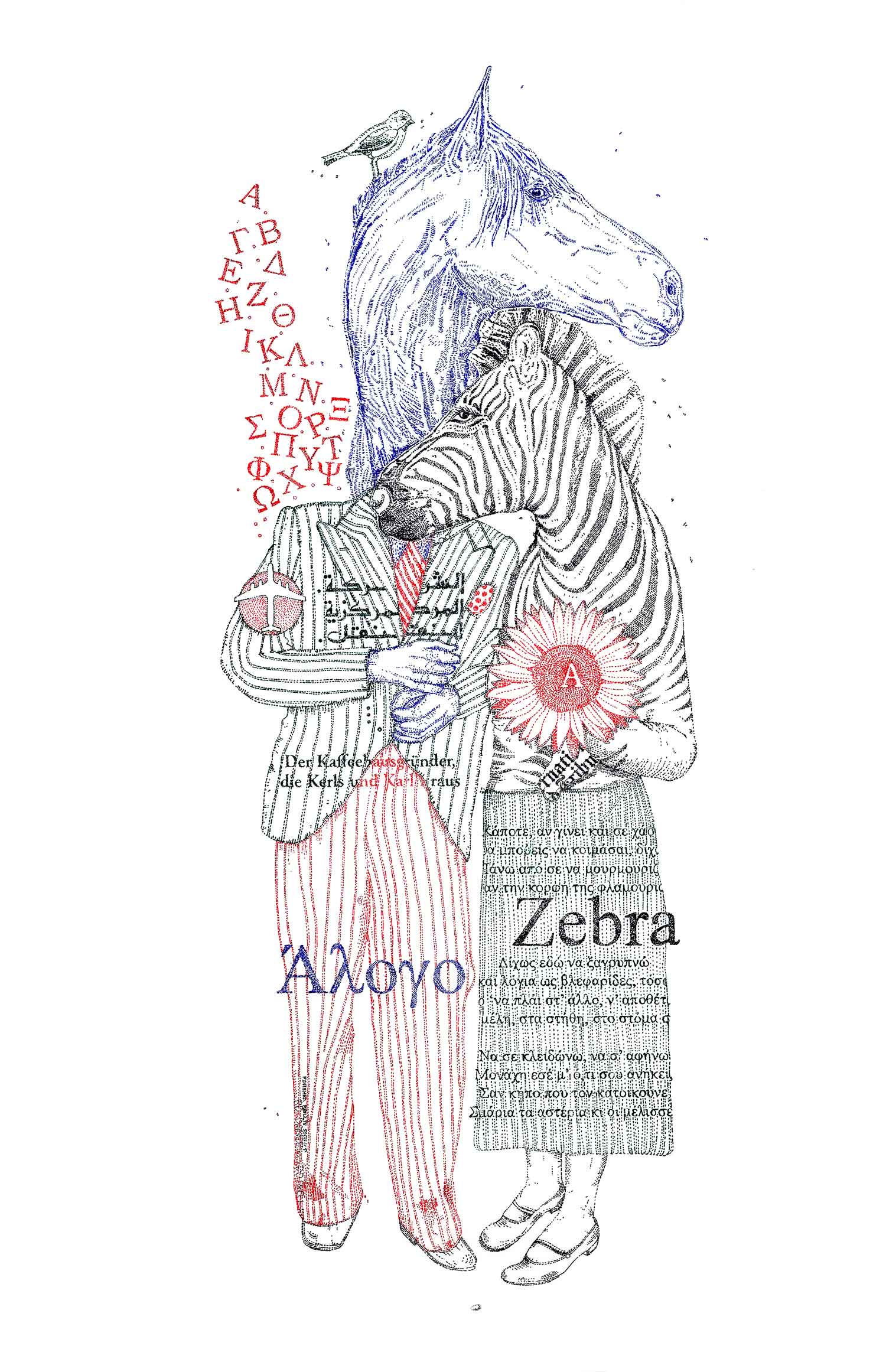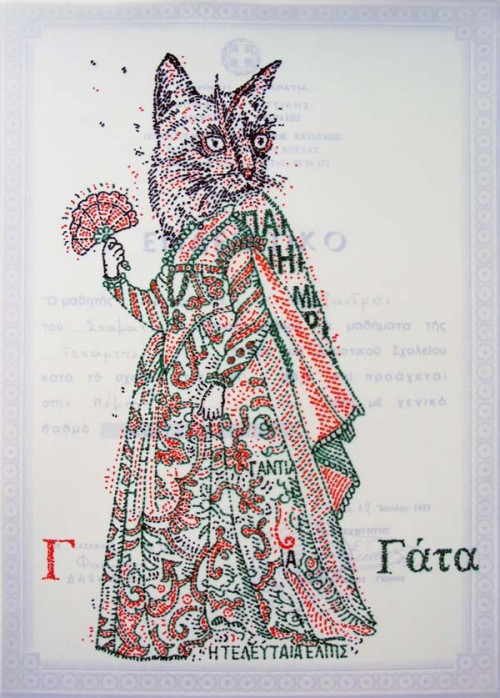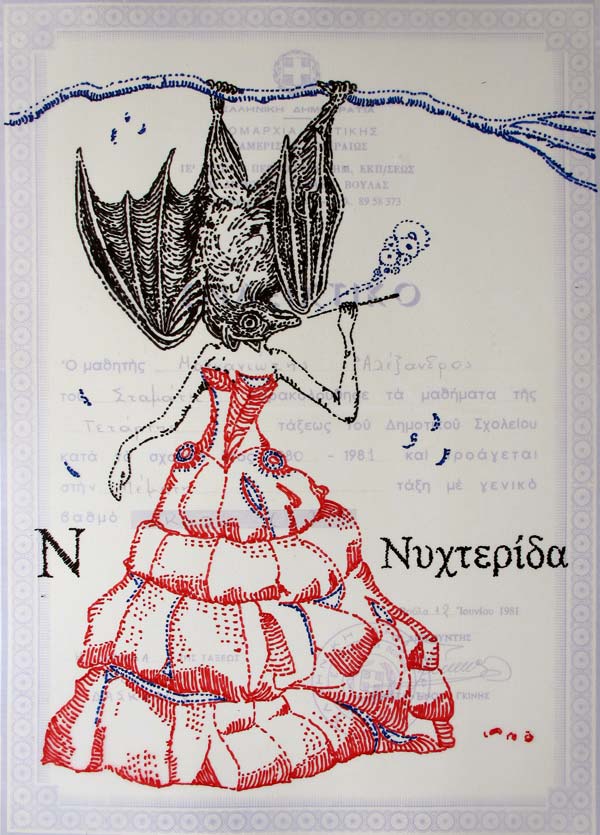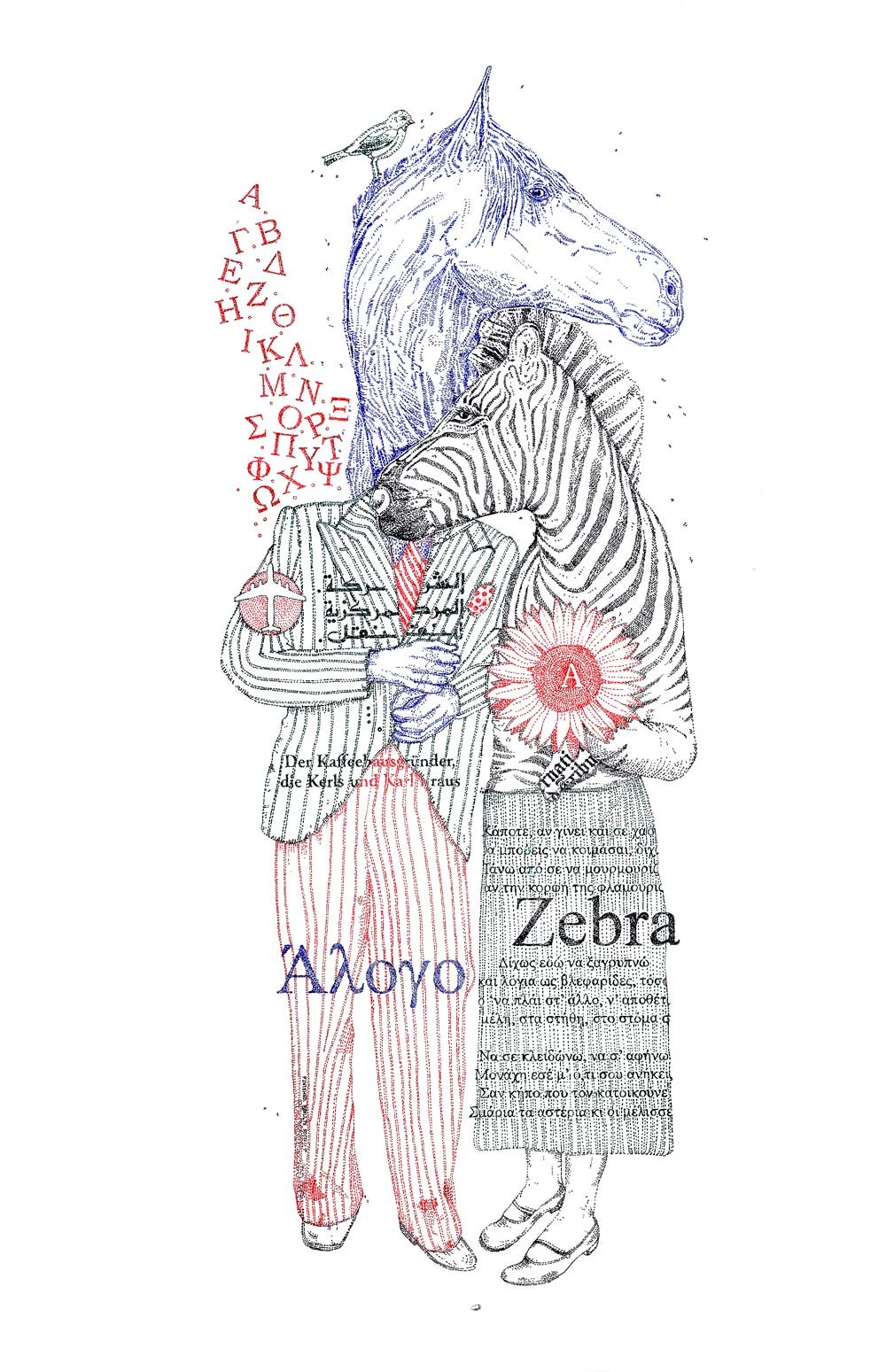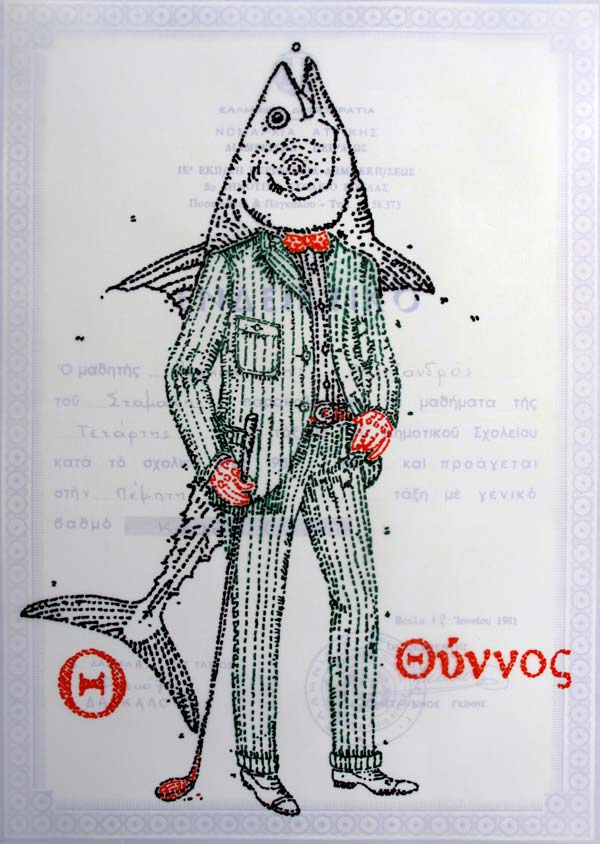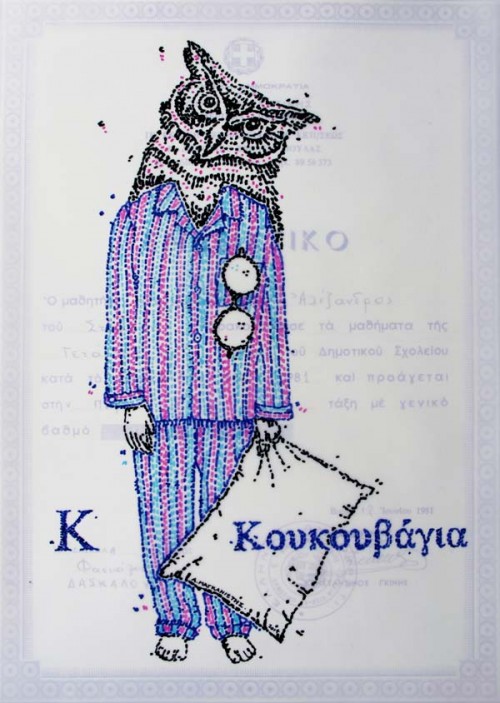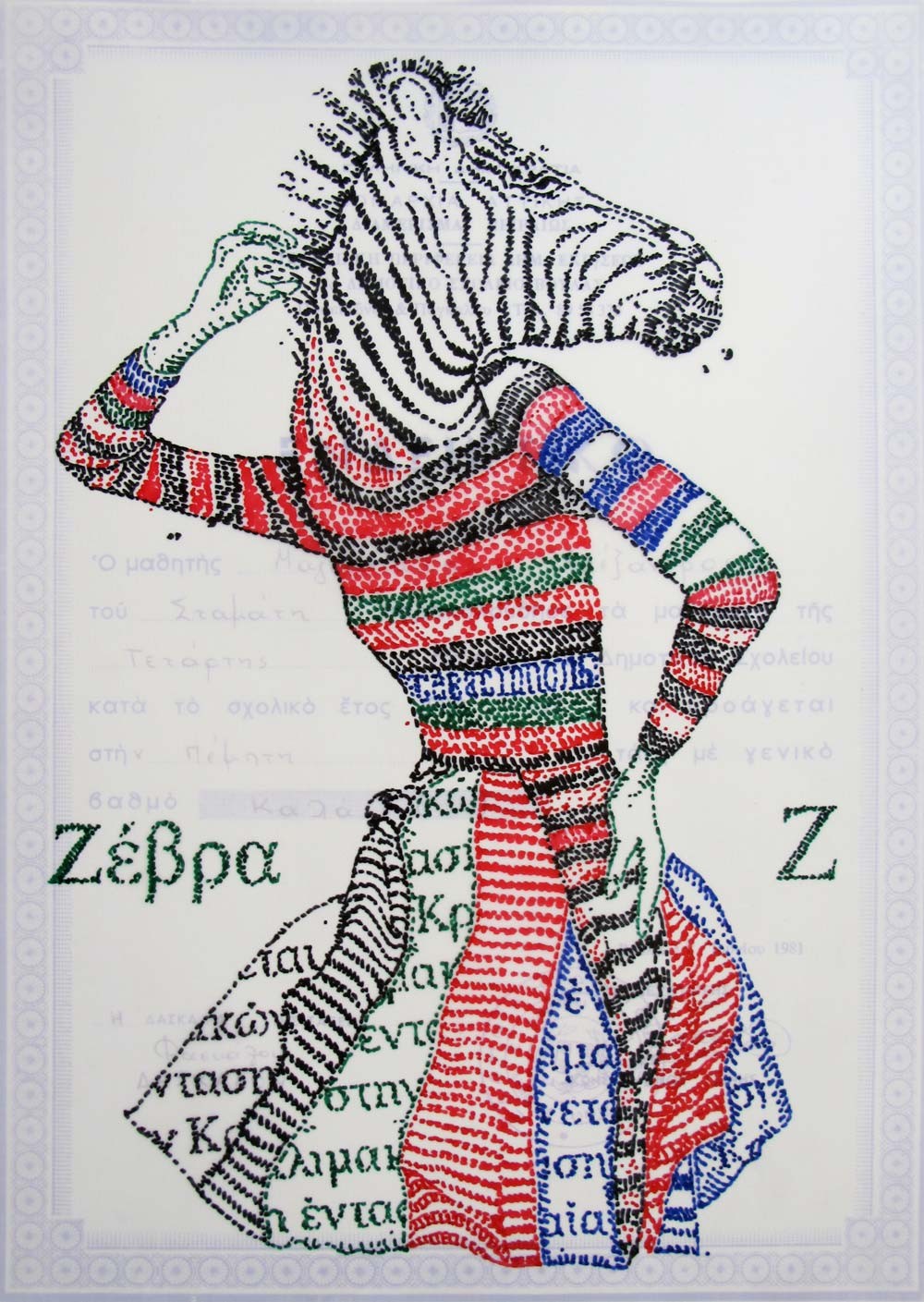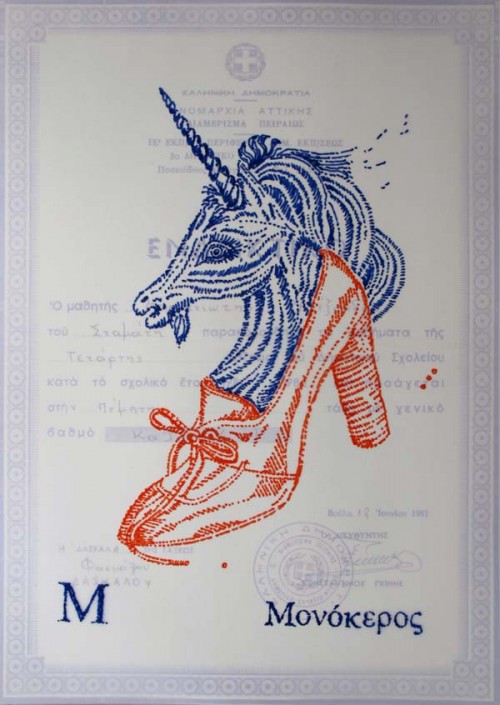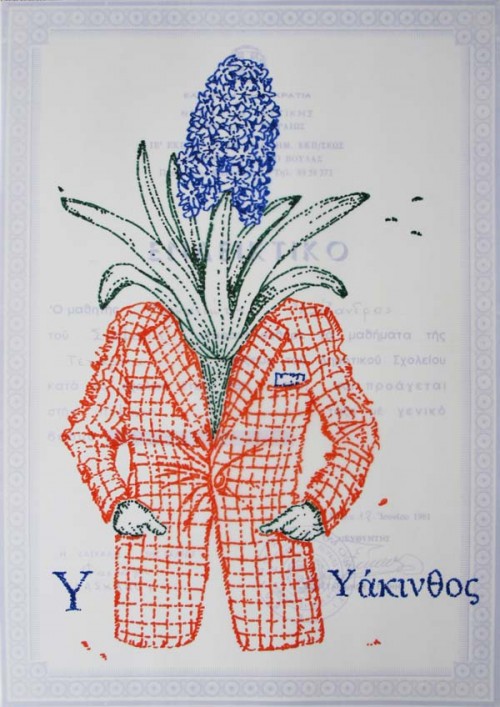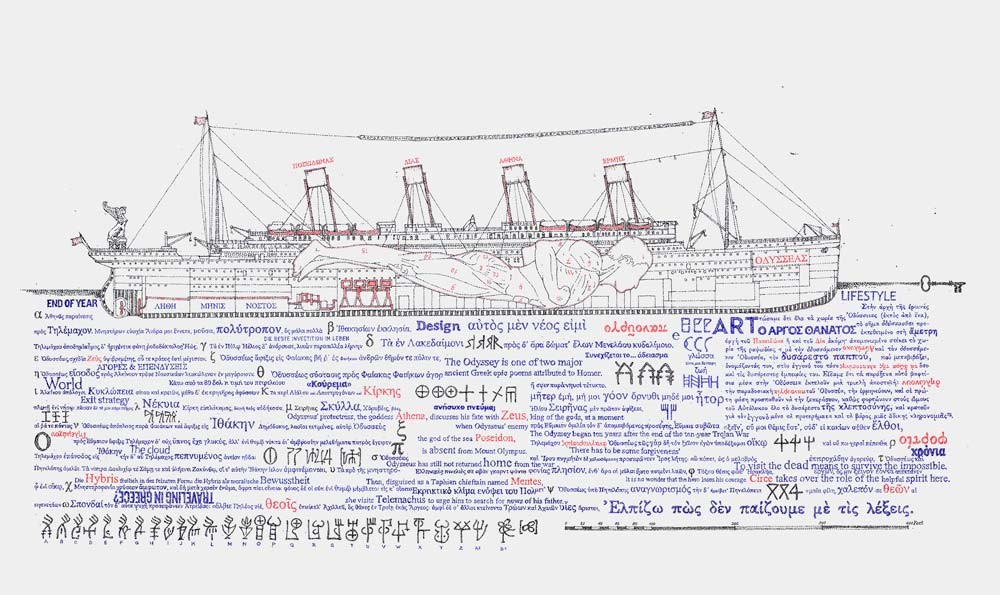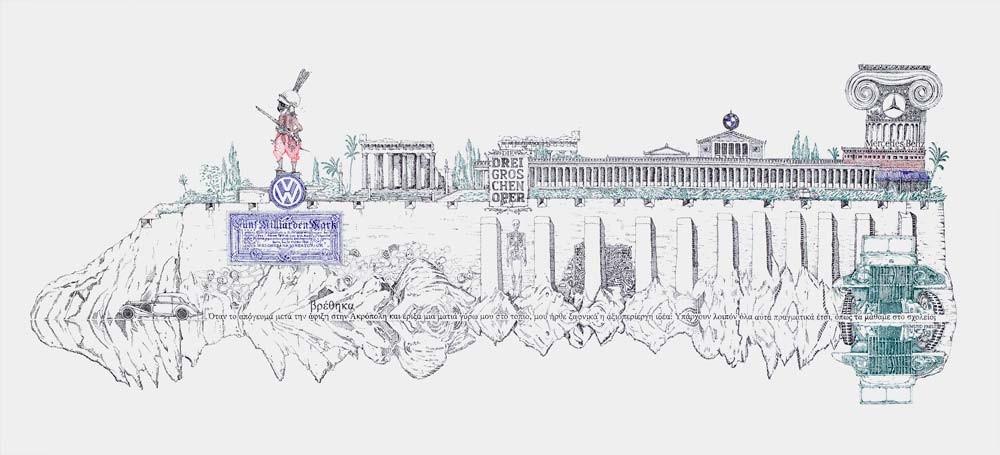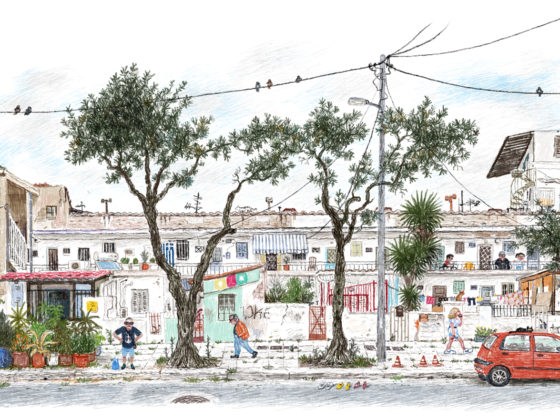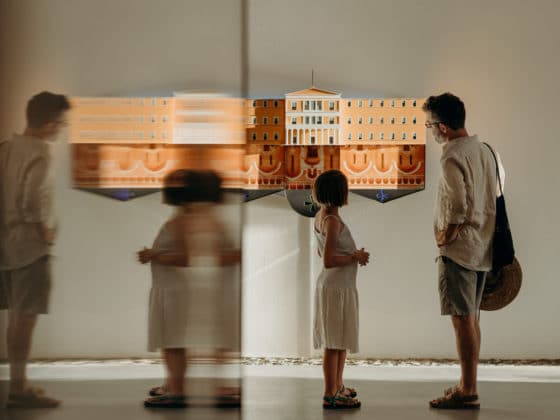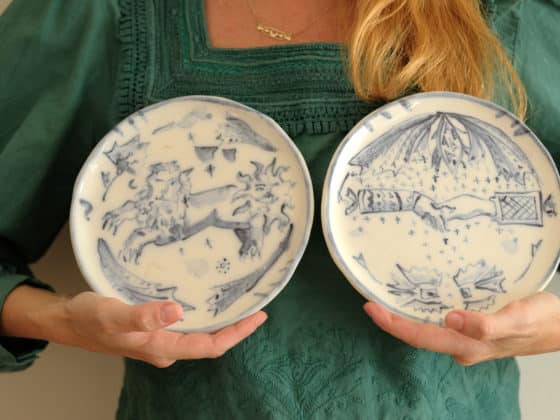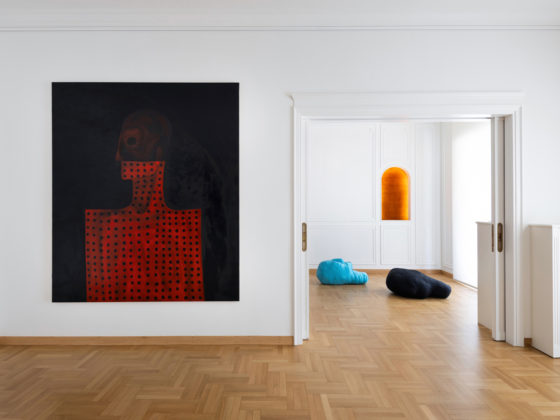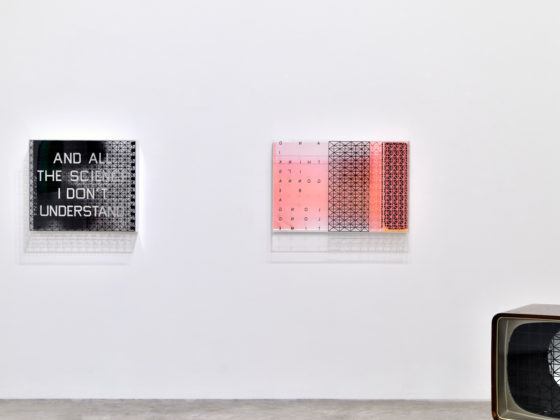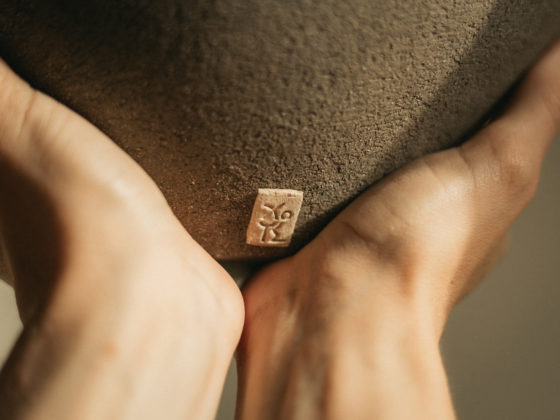When a unicorn pops out of a high heeled shoe to meet a hyacinth wearing a checkered jacket, standing next to a tiger with a headache, everything is possible!
Alphabet letters provide the occasion to wander in a magic journey accompanied by gorgeous, mysterious, scary creatures. Museums hosting Alexandros Maganiotis work become a field of endless imagination and game for younger and older visitors and also the starting point of hundreds fairytales without beginning or end.
Alexandros Maganiotis’ reflection on individual or group works focuses on the magnitude of the work of art as a linguistic-communicative medium. A key aspect of his artistic research recommends the examination of the margins between image-speech/text along with their interactive and mutually complementary relationship. The series [The Alphabet (from Alpha to Omega)] of 24 compositions of words (one for each letter of the Greek alphabet) and their images, where heads of animals or plants emerge from human bodies, is indicative of his intentions and pursuits towards this direction. Alexandros Maganiotis’ zoomorphic-hybrid figures adopt personas, converse with conventions and stereotypes imposed by contemporary society, are covered up by roles and behaviors, speak about realities and gender identities, introduce an alternative and extremely interesting engagement with the world. The compositions Together, Memoir, Presence and Absence are under the same framework.
The composition A Disturbance of Memory (State Museum of Contemporary Art Collection) transcribes the marginal, daring and foremost “sacrilegious” and extreme proposal of K. F. Schinkel for the construction of the Othon palaces on the Acropolis in Athens. The work is activated with the textual juxtaposition of Sigmund Freud’s narration which refers to the famous incident of the memory disturbance caused by his visit (1904) to Athens and the Parthenon- the unprecedented, “strange” and “bizarre” feeling experienced, the extreme reaction, the unexpected intrusion of reality in the world of myths, the division between his physical presence to the holy rock of Acropolis and the denial of the fact that he is actually there. The depiction of a poster from The Threepenny Opera by Bertolt Brecht and a German government bond complete the image.
The series of works Seeking for Odysseus is a completely personal interpretative approach of the Homeric epic to a fruitful dialectic relation, to the extension of the poetic language, to strengths, to resistances and challenges of the archetypal hero-voyager.
